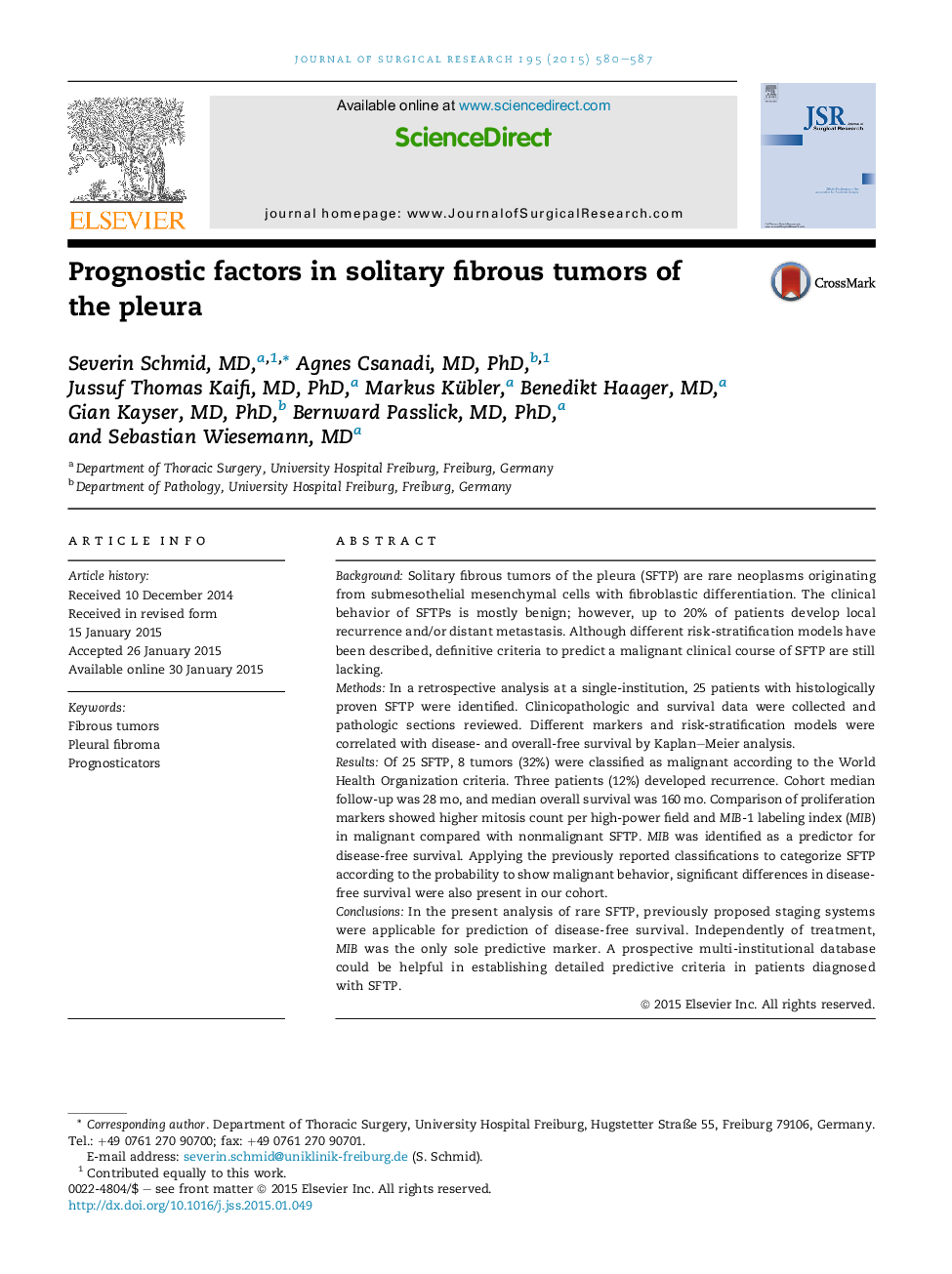| Article ID | Journal | Published Year | Pages | File Type |
|---|---|---|---|---|
| 4299690 | Journal of Surgical Research | 2015 | 8 Pages |
BackgroundSolitary fibrous tumors of the pleura (SFTP) are rare neoplasms originating from submesothelial mesenchymal cells with fibroblastic differentiation. The clinical behavior of SFTPs is mostly benign; however, up to 20% of patients develop local recurrence and/or distant metastasis. Although different risk-stratification models have been described, definitive criteria to predict a malignant clinical course of SFTP are still lacking.MethodsIn a retrospective analysis at a single-institution, 25 patients with histologically proven SFTP were identified. Clinicopathologic and survival data were collected and pathologic sections reviewed. Different markers and risk-stratification models were correlated with disease- and overall-free survival by Kaplan–Meier analysis.ResultsOf 25 SFTP, 8 tumors (32%) were classified as malignant according to the World Health Organization criteria. Three patients (12%) developed recurrence. Cohort median follow-up was 28 mo, and median overall survival was 160 mo. Comparison of proliferation markers showed higher mitosis count per high-power field and MIB-1 labeling index (MIB) in malignant compared with nonmalignant SFTP. MIB was identified as a predictor for disease-free survival. Applying the previously reported classifications to categorize SFTP according to the probability to show malignant behavior, significant differences in disease-free survival were also present in our cohort.ConclusionsIn the present analysis of rare SFTP, previously proposed staging systems were applicable for prediction of disease-free survival. Independently of treatment, MIB was the only sole predictive marker. A prospective multi-institutional database could be helpful in establishing detailed predictive criteria in patients diagnosed with SFTP.
